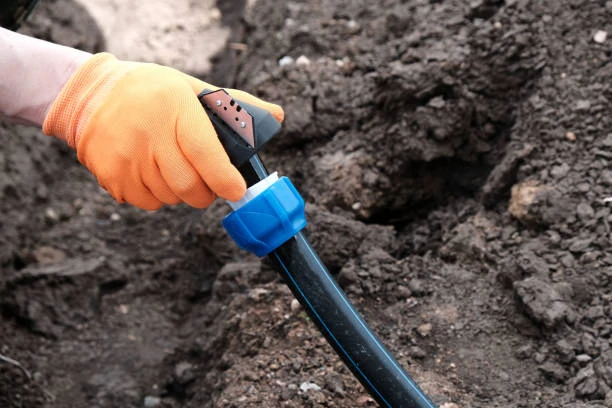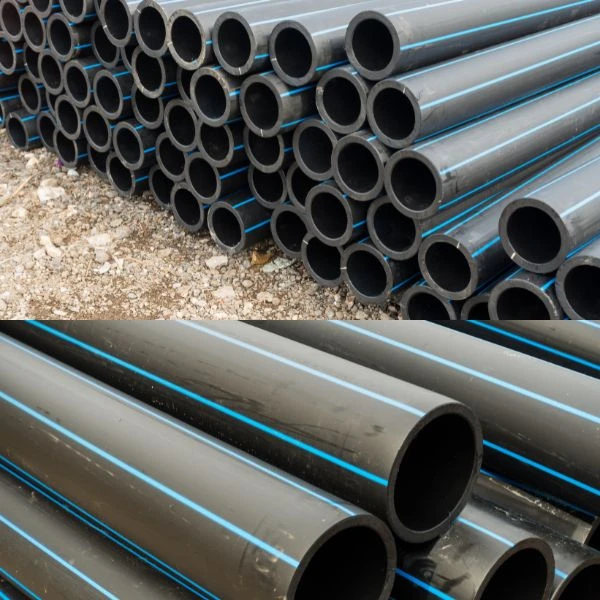When it comes to constructing durable and efficient plumbing and drainage systems, HDPE (High-Density Polyethylene) pipes and fittings are often the go-to choice. Known for their strength, flexibility, and resistance to chemicals and corrosion, HDPE products can significantly enhance the longevity and reliability of a project. However, selecting the right HDPE pipe and fittings involves careful consideration of various factors. This article will explore these factors in detail, particularly focusing on pipe press fittings.

Understanding HDPE Pipes and Fittings
What Are HDPE Pipes?
HDPE pipe are made from high-density polyethylene, a thermoplastic known for its high strength-to-density ratio. These pipes are available in various diameters and pressure ratings, making them suitable for a wide range of applications, from residential plumbing to industrial systems.
What Are Pipe Press Fittings?
Pipe press fittings are specialized connectors used to join HDPE pipe without the need for welding or other complicated joining techniques. These fittings allow for quick and secure connections, making them ideal for both commercial and residential projects.
Key Factors to Consider
1. Material Quality
The quality of HDPE material is paramount. Look for pipes and fittings that comply with industry standards such as ASTM, ISO, or AS/NZS. High-quality HDPE offers better resistance to impact, UV rays, and chemicals, ensuring a longer lifespan for your installation.
2. Pressure Rating
HDPE pipes and fittings come with different pressure ratings, which indicate the maximum pressure they can withstand. Depending on your application—be it water supply, drainage, or industrial use—select pipes and fittings with an appropriate pressure rating to prevent failures.
3. Size and Diameter
The size and diameter of the pipes and fittings are crucial for proper flow rates and system efficiency. It’s essential to consider the specific requirements of your project, including the volume of fluid to be transported and the layout of your piping system.
4. Fitting Type
When it comes to pipe press fittings, there are various types available, including elbows, tees, and couplings. Each type serves a specific purpose, and choosing the right fitting can influence the overall performance of your plumbing system.
5. Installation Method
HDPE pipes are often installed using various methods, including fusion welding, mechanical joints, and press fittings. Pipe press fittings offer a quick and easy installation method, eliminating the need for complex machinery and reducing labor costs.
6. Compatibility with Existing Systems
If you are integrating new HDPE pipes and fittings into an existing system, ensure that they are compatible with the current materials and configurations. Mismatched materials can lead to leaks and other issues.
7. Environmental Resistance
HDPE is known for its resistance to corrosion, but it’s essential to consider the environmental conditions of your installation site. Factors like soil chemistry, temperature extremes, and exposure to chemicals can affect the performance of HDPE pipes and fittings.
8. Longevity and Maintenance
One of the main advantages of HDPE pipes is their durability. Consider the expected lifespan of the pipes and fittings, and choose products that require minimal maintenance over time. HDPE pipes can last for decades with proper installation and care.
9. Cost-Effectiveness
While it may be tempting to go for the cheapest option, consider the long-term value of your investment. High-quality HDPE pipes and fittings might come with a higher initial cost but can save you money in the long run due to lower maintenance and replacement needs.
10. Supplier Reputation
Selecting a reputable supplier is crucial for ensuring the quality of your HDPE pipes and fittings. Research potential suppliers, read reviews, and ask for recommendations to find a reliable source that provides high-quality products.
11. Certifications and Standards
Look for HDPE pipes and fittings that have been certified by relevant authorities. Certifications indicate that the products have undergone rigorous testing and meet safety and performance standards.
12. Customization Options
In some cases, you may require customized pipes and fittings to meet specific project needs. Check with your supplier about customization options, such as unique sizes, shapes, or fittings designed for specialized applications.
13. Installation Support
If you are unfamiliar with installing HDPE pipes and fittings, seek suppliers that offer installation support or training. Proper installation is critical to ensuring the efficiency and longevity of your plumbing system.
14. Warranty and After-Sales Support
A good warranty can provide peace of mind and protection against manufacturing defects. Additionally, inquire about after-sales support to address any issues that may arise post-installation.
Conclusion
Selecting the right HDPE pipes and fittings, especially pipe press fittings, involves a comprehensive assessment of various factors. From material quality and pressure ratings to installation methods and supplier reputation, each aspect plays a vital role in ensuring the success of your plumbing system. By taking the time to carefully evaluate these factors, you can make informed decisions that lead to a reliable and efficient installation.
Frequently Asked Questions (FAQ)
1. What are the advantages of using HDPE pipes?
HDPE pipes are lightweight, resistant to corrosion, and have a long lifespan, making them a cost-effective choice for various applications.
2. How do I choose the right size of HDPE pipe?
Consider the flow requirements of your project, including the volume of fluid and the layout of your system, to determine the appropriate size.
3. Can HDPE pipes be used for drinking water?
Yes, HDPE pipes that meet specific health and safety standards can be used for potable water systems.
4. What is the installation process for pipe press fittings?
Pipe press fittings can be installed by simply pressing them onto the pipe ends, eliminating the need for welding or glue.
5. How long do HDPE pipes typically last?
With proper installation and maintenance, HDPE pipes can last 50 years or more, depending on environmental conditions and usage.
By keeping these factors in mind, you can make informed choices that enhance the durability and efficiency of your HDPE piping systems.


















